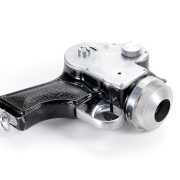Every time you hop on a bicycle, you’re not just exercising—you’re experiencing physics in action. From the moment the wheels touch the ground to the force you apply on the pedals, a bicycle is the perfect real-world example of contact forces.
The keyword “contact forces bicycle” refers to the physical interactions between a bicycle and its environment. These include friction, normal force, applied force, and air resistance. Understanding these forces helps explain how bicycles move, balance, and stop.
This article will explore the different types of contact forces acting on a bicycle, how they influence cycling, and why they matter for both science students and cycling enthusiasts.
What Are Contact Forces?
A contact force is a force that arises when two objects physically touch. Unlike non-contact forces (like gravity or magnetism), contact forces require direct interaction.
Key Types of Contact Forces:
- Friction – Resistance between two surfaces in contact.
- Normal Force – Perpendicular support force exerted by a surface.
- Applied Force – Any force directly exerted by a person or object.
- Air Resistance (Drag) – Technically a fluid contact force from air particles.
In the case of a bicycle, all these forces play a role in its motion.
Contact Forces Acting on a Bicycle
Friction Between Tires and Road
Friction is the most important contact force for bicycles:
- Static friction: Keeps the tires gripping the road, allowing forward motion without slipping.
- Kinetic friction: Comes into play when tires skid or slide.
Example: When you pedal, static friction prevents the wheels from just spinning in place, converting rotational motion into forward movement.
Normal Force from the Ground
- The ground exerts an upward normal force on the bicycle equal to the combined weight of the rider and the bike.
- This balances the downward pull of gravity, keeping the bike upright on a flat surface.
Applied Force from Pedaling
- When you push on the pedals, you apply a force transmitted through the chain to the wheels.
- This applied force interacts with friction to create motion.
Air Resistance (Drag)
- As speed increases, air molecules collide with the rider and bicycle, creating drag.
- This force grows with velocity and can significantly slow a cyclist down.
Rolling Resistance
- A small force caused by tire deformation and road texture.
- Less than sliding friction, but still a factor in long-distance cycling.
The Physics of Cycling: A Breakdown
Let’s break down cycling step by step in terms of contact forces.
- Starting Motion
The rider applies a downward force on the pedal.
The chain transfers this force to the rear wheel.
Static friction pushes the bicycle forward.
- Maintaining Speed
Applied pedaling force balances out air resistance and rolling resistance.
Normal force and gravity remain balanced vertically.
- Stopping the Bicycle
Brakes increase friction between the pads and wheels.
This creates a resisting force greater than forward motion, stopping the bike.
- Turning
Static friction between tires and road provides the centripetal force needed to turn.
Leaning the bicycle shifts the balance of forces.
Examples of Contact Forces on a Bicycle
| Contact Force | Bicycle Example | Effect on Motion |
| Friction | Tires gripping the road | Enables forward movement |
| Normal Force | Ground pushing upward on wheels | Balances gravity |
| Applied Force | Pedaling | Provides energy for motion |
| Air Resistance | Wind hitting rider at high speed | Slows bike down |
| Rolling Resistance | Tires deforming slightly on pavement | Reduces efficiency |
Why Contact Forces Matter in Bicycles
- Safety – Understanding braking friction helps avoid skidding accidents.
- Performance – Competitive cyclists use aerodynamic designs to reduce drag.
- Engineering – Bicycle design depends on balancing forces for stability.
- Education – Physics students use bicycles as real-life case studies for Newton’s Laws.
Contact Forces and Newton’s Laws of Motion
- First Law (Inertia): A bike keeps moving unless friction or braking stops it.
- Second Law (F=ma): The harder you pedal, the faster you accelerate.
- Third Law (Action-Reaction): Pedal force pushes on the ground, and the ground pushes back to propel the bike forward.
Real-World Applications of Contact Forces in Cycling
Road Cycling
- Tires are designed for low rolling resistance.
- Cyclists crouch low to reduce air resistance.
Mountain Biking
- Wide tires increase static friction on rough terrain.
- Suspension systems adjust normal forces for stability.
BMX and Stunts
- Riders manipulate applied forces and friction for tricks.
Everyday Commuting
- Braking systems carefully balance friction and safety.
Common Misconceptions About Contact Forces in Bicycles
- “Friction slows you down.”
Partially true—rolling and air resistance reduce speed, but without friction, you couldn’t move forward at all.
- “Heavier bikes go faster.”
Not necessarily—weight increases normal force, but also increases rolling resistance.
- “Air resistance is negligible.”
False. At high speeds, drag is the dominant resisting force.
How Engineers Optimize Contact Forces in Bicycles
- Aerodynamics – Streamlined frames and helmets reduce air resistance.
- Tire Design – Different tread patterns maximize friction for specific terrains.
- Brake Systems – Disc brakes increase controlled friction for efficient stopping.
- Materials – Lightweight materials balance normal force and efficiency.
Educational Use: Contact Forces Bicycle Experiments
Teachers often use bicycles in physics classes to demonstrate forces:
- Friction Test – Compare braking distance on wet vs. dry surfaces.
- Air Resistance Test – Measure speed with upright posture vs. crouched.
- Normal Force Test – Compare tire deformation with different riders’ weights.
These experiments show students how contact forces apply in everyday life.
Future of Bicycles and Contact Forces
- Electric Bicycles (E-bikes): Apply motor force in addition to pedaling.
- Smart Materials: Tires that adjust friction dynamically.
- Advanced Aerodynamics: Wind tunnel testing reduces drag further.
As cycling evolves, understanding contact forces remains critical for safety, efficiency, and design.
Conclusion
The phrase “contact forces bicycle” describes the physical interactions that make cycling possible. From friction that propels the bike forward to air resistance that slows it down, every ride is a demonstration of physics at work.
Whether you’re a student learning about Newton’s Laws, a teacher preparing classroom demonstrations, or a cyclist seeking better performance, understanding contact forces provides valuable insight into how bicycles function.
At its core, riding a bike isn’t just exercise—it’s physics in motion.
FAQs
1. What is the main contact force that moves a bicycle forward?
Static friction between the tires and road surface provides the forward push.
2. How does air resistance affect a bicycle?
Air resistance increases with speed, reducing efficiency and requiring more pedaling force to maintain velocity.
3. Why is friction both helpful and harmful in cycling?
Helpful because it allows movement and braking; harmful because rolling resistance and drag reduce efficiency.
4. How do brakes work on a bicycle?
They increase friction on the wheel rims or discs, creating a resisting force to stop the bike.
5. Can bicycles work without contact forces?
No. Without contact forces like friction and normal force, bicycles couldn’t move, turn, or stop.
Also read: Solidcore Promo Code: Save Money on Your Next Workout









